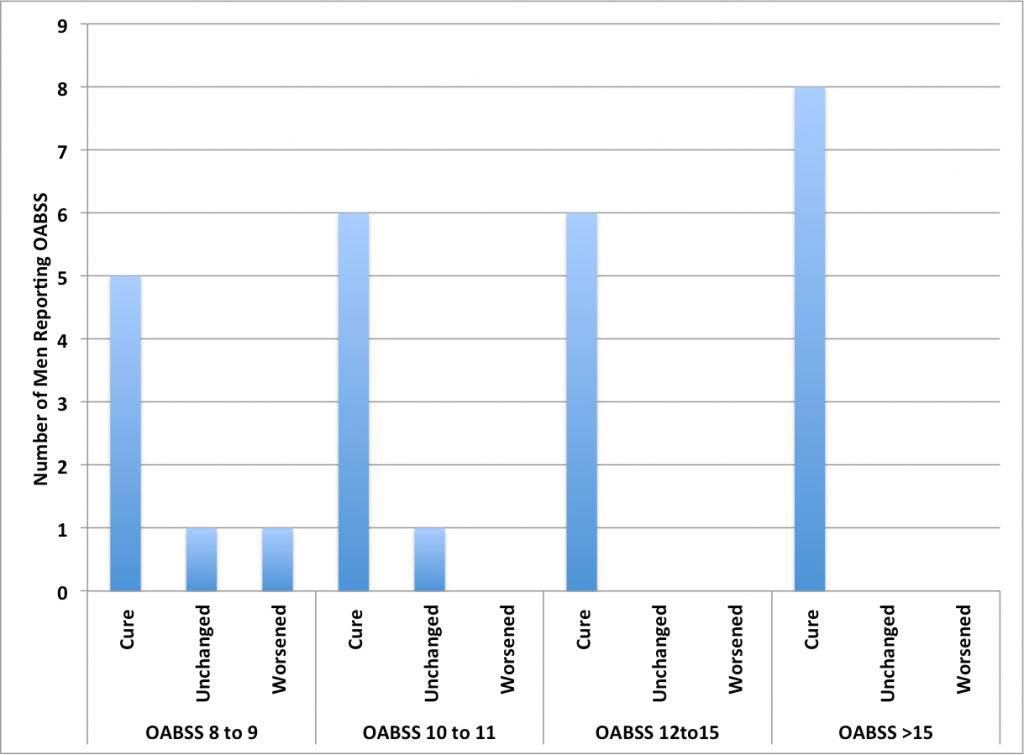by Rajveer S. Purohit, MD, MPH
In patients with urethral strictures, particularly those who have had recurrent and/or very dense strictures, urethroplasty or urethral reconstruction has a high rate of cure. Curing the stricture is one thing but relief of symptoms is another. Patients with long standing strictures may have permanent changes to the bladder in response to the stricture which can contribute to what are called obstructive urinary symptoms such as slow urinary stream as well as irritative urinary symptoms such as urinary urgency and frequency. These constellation of irritative symptoms are sometimes referred to as overactive bladder.
So does urethral reconstruction also cure overactive bladder in men who have urethral strictures? Until now there was no data on this.
We’ve previously presented our research on this topic at the largest meeting for urologists in the world. The data has now been submitted for publication. We evaluated our database of over 250 reconstructive cases and specifically looked at 28 men with urethral strictures who underwent reconstructive surgery and had a diagnosis of overactive bladder. Our data found that there was a 53% median reduction in symptoms and that 90% of men were cured of overactive bladder after urethroplasty with a median follow-up of approximately 1 year. In fact, men with urethral strictures who had the worst OAB symptoms had the greatest improvement in their OAB.
This information can give patients with urethral stricture valuable guidance and hope of what may expect after urethroplasty.
The table below summarizes our findings with higher OABSS reflecting worse overactive bladder symptoms.


